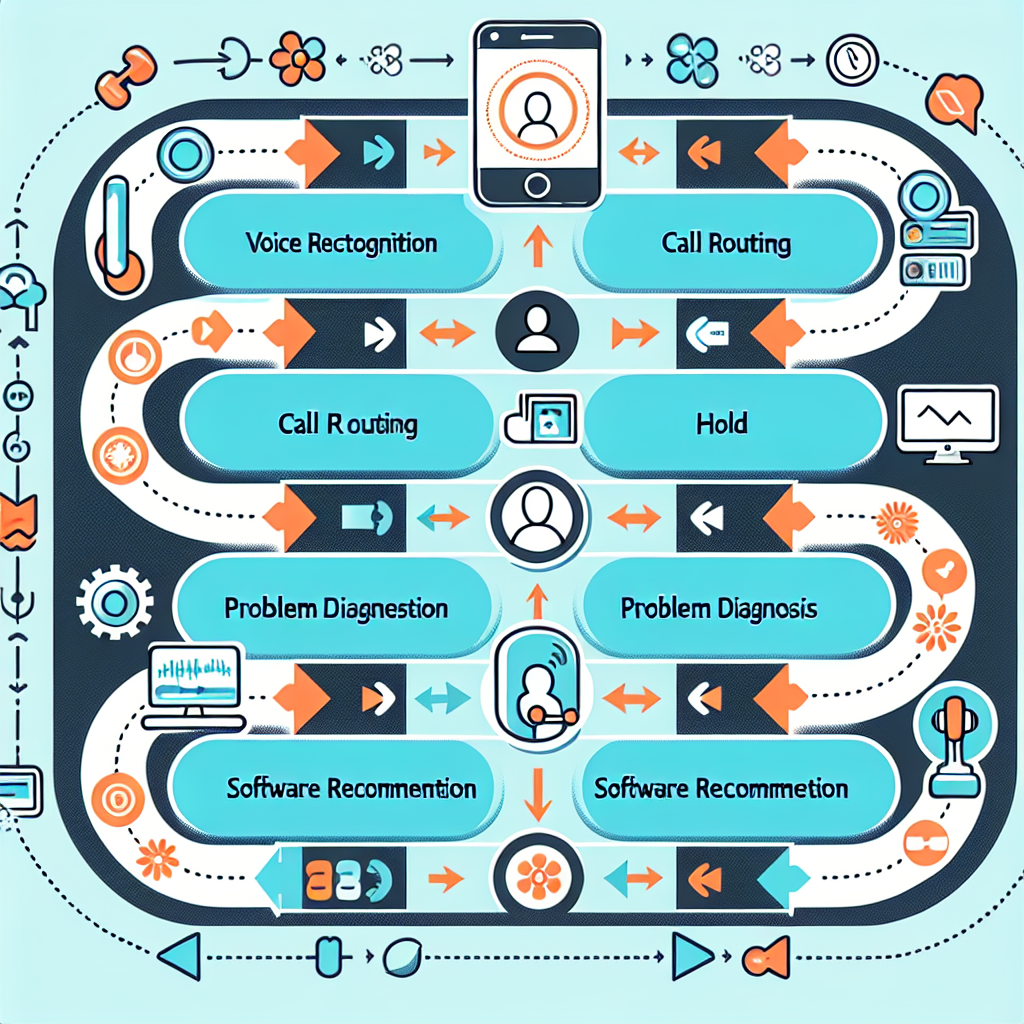
In the ever-evolving landscape of customer service, a game-changer has emerged: Automated Call Disposition. This sophisticated technology leverages artificial intelligence (AI) to analyze, categorize, and manage calls based on their content. Instead of manual categorization, which often proves to be time-consuming and prone to errors, automated call disposition offers a more efficient, accurate, and seamless option.
At its core, automated call disposition is about automating business operations to maximize efficiency. The process involves the AI analyzing the content and context of a call, following which it categorizes the call based on predefined categories. These categories could range widely available, from complaints and queries to feedback and suggestions.

But what makes this technology truly revolutionary goes beyond just simplifying and streamlining operations. With the ability to analyze countless calls in mere seconds, AI-driven categorization brings about unprecedented scalability - a feat unthinkable for traditional manual categorization. By automating this aspect of call management, businesses can A) save valuable time; B) reduce the risk of mis-categorization; C) improve reliability and accuracy, and D) generate actionable insights that drive further business growth.
The benefits of automated call disposition are not just limited to handling customer calls more efficiently. For data management, too, this AI-enabled technology is absolutely transformative. It allows enterprises to better understand their customer interactions, get a pulse on consumer sentiment, and identify areas that need improvement. Furthermore, the rich data generated by the AI becomes a valuable asset in itself, guiding businesses towards informed decision-making.
In conclusion, automated call disposition is nothing short of a paradigm shift in the way we handle customer service calls and manage data. Embracing this technology is a vital step towards future-proofing businesses and gaining an edge in an increasingly competitive landscape.
Automated Call Disposition, specifically AI-Driven Post-Call Categorization, is a revolutionary technology in the customer service sector. This technology primarily uses two methods: Natural Language Processing (NLP) and Machine Learning (ML), to further categorize and analyze calls based on their content, sentiment, and purpose.
Natural Language Processing (NLP) is a subfield of linguistics, computer science, and artificial intelligence that focuses on interactions between computers and human language. In Automated Call Disposition, NLP works to comprehend and interpret the spoken words during the call. It processes the information and conversely enables the system to respond in a manner that the caller can understand.
Its main functionalities include speech recognition, natural language understanding, and ultimately language generation. By deploying NLP, the AI-driven system can acknowledge and categorize calls based on content, thus simplifying data organization for later analysis.
Machine Learning (ML), a subset of AI, plays a critical role in pattern recognition and learning without continuous human intervention. ML integrates with NLP to study the categorized data, learn the patterns, and anticipate the outcome of future calls. ML herein models a detailed analysis of calls using existing data, which results in more enriched and effective customer service.
The integration of these two technologies, NLP and ML, leads to a comprehensive and efficient AI-driven post-call categorization system. This alignment not only expedites customer service but also allows for better data-based decision making, enhancing overall efficiency in any organization that deals with regular customer calls.
As artificial intelligence (AI) infiltrates various facets of business operations, it brings significant enhancements to existing processes. One such advancement is the Automated Call Disposition, an AI-driven system that automatically categorizes post-call data. This technology comes with a host of benefits that streamline operations, enhance customer interactions, and provide insights for more informed decision-making.

Implementing AI-driven call disposition has been observed to drastically improve operational efficiency. Through the intelligent analysis of calls, businesses can cut down on manual intervention in the post-call process, save time, and let their service representatives focus on more strategic tasks. Instead of manually categorizing each call, representatives can now trust AI to handle tedious data classification, resulting in maximized productivity.
In addition, the technology can aid businesses in gleaning enhanced customer insights. By categorizing calls into different types based on the subjects discussed, sentiment, and outcomes, organizations can further understand their customers’ needs, behavior, and pain points. This detailed understanding, with rich, real-time data, allows businesses to tailor their offerings accordingly, ensuring customer satisfaction.
Further, AI-driven call disposition offers businesses the benefits of quick responses based on categorized call data. Understanding the nature and urgency of calls promptly aids in prioritizing high-priority issues and serving customers faster. Consequently, this leads to improved customer service and, in turn, increased customer loyalty. Also, the insights derived can help businesses to adjust and refine their service strategies and procedures.
About the potential of AI-driven call disposition, Example.com notes, "Automation in the post-call process, powered by the intelligence of AI, has the capacity to revolutionize the way businesses handle customer interactions, offering immense scope for enhancement."
In summary, adopting an AI-driven call disposition not only reduces manual labor but also promotes strategic decision-making, ultimately contributing to an improved customer experience, which is a critical determinant of business success.
Automated Call Disposition is an AI-driven technology that allows for post-call categorization, revising the traditional process which demanded manual and time-consuming input from call agents. A sophisticated approach that optimizes customer experiences and operational efficiency, it can also interface with an array of business tools to enforce automation, increase data accuracy, and promote real-time decisions.
Customer Relationship Management (CRM) platforms, essential tools in managing customer data and interactions, greatly benefit from integration with Automated Call Disposition. By automatically categorizing calls based on their content and sentiment, valuable time is saved and potential errors reduced, resulting in more accurate customer data. Moreover, the CRM system can automatically initiate tasks or workflows based on call outcomes, enhancing efficiency and speed in addressing customer needs and concerns.
Furthering its application, Automated Call Disposition can be synched with various business analytics tools. By channeling categorized call information directly into these tools, businesses can glean real-time insights about customer behavior, needs, and reactions to various situations or offerings. This allows for instant decision-making, vital in today's fast-paced business environment, where being a step ahead can mean the difference between success and failure.
In essence, the integration of Automated Call Disposition with essential business tools presents immense opportunities for improving operational workflows, guaranteeing data accuracy, and enabling real-time decisions based on direct, categorized customer interaction data. The adoption of this innovative technology can potentially propel any business towards heightened customer satisfaction and increased profitability.
In recent years, the adoption and implementation of Automated Call Disposition, powered by Artificial Intelligence, has seen a notable surge across several business sectors. Multiple case studies have surfaced, demonstrating AI's ability to effectively categorize post-call dispositions, thereby improving operational efficiency and customer experience.

Take the case of a global telecommunications provider, which previously relied heavily on manual effort to categorize their customer calls. This process was not only time-consuming and labor-intensive but also resulted in inconsistencies and inaccuracies. The implementation of AI-Driven Post-Call Categorization into their customer service process revolutionized their operations. Agara reports a significant reduction in call handling and wrap-up times, a sharp increase in categorization accuracy, and an overall boost to agent productivity.
Concepts like AI and automation in call center reporting are also emerging as key strategies in providing faster, more efficient services. A New York based online retail company DMNews reports, achieved radical improvements in speed and efficiency of operations, and the accuracy of their call analysis by leveraging AI's capabilities to categorize calls and automate reporting.
The IT service management industry, heavily tied to customer interactions, has also found significant success with AI-enabled call disposition. A prominent BMC Software case study details how are they able to automate and streamline their call-disposition processes, reducing handling times and increasing accuracy. This not only improved the customer experience but also allowed their service desk analysts more time for complex problem-solving tasks.
These examples are merely a glimpse into the transformative potential of AI-Driven Post-Call Categorization. Varying across industries, the integration of AI in call disposition can drive notable improvements in operational efficiency, accuracy, and customer satisfaction, positioning businesses for sustained growth and success.
Start your free trial for My AI Front Desk today, it takes minutes to setup!








